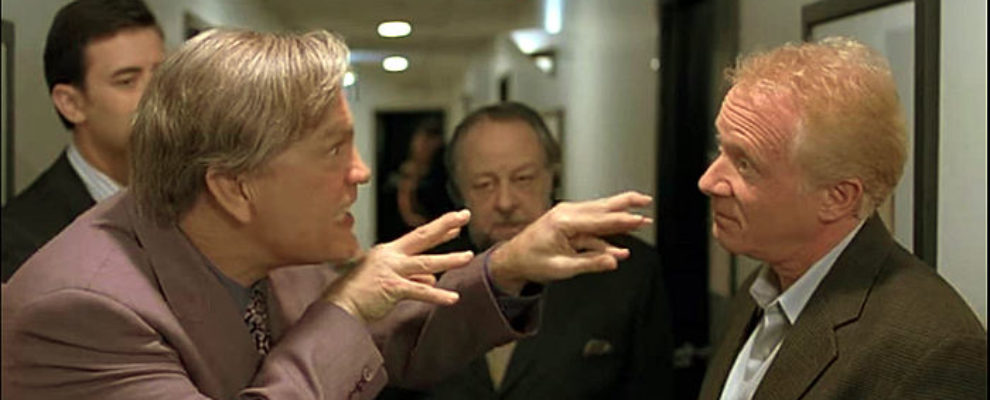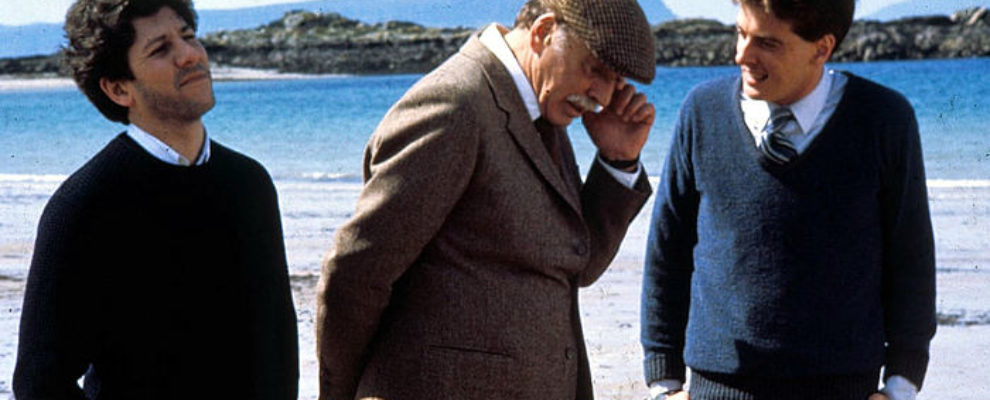Practice Plotting Using Movies
I’m not fond of “how-to-write” books which use movies as a teaching device. I understand that it’s an easy shortcut, and that more people are familiar with a popular movie as an example. It’s not just that they use the same movies (“Silence of the Lambs” is frequently used), it’s that it’s so limiting. It encourages small plots and small stories.
That’s because a 90-minute movie is actually the equivalent of a short story or a novella, not a novel. It’s one thing to learn how to write a screenplay starting with an epic novel like “Gone With the Wind,” but learning to plot a story going the other way around can be limiting.
Movies are good at compression, a form of visual and aural shorthand that conveys the meaning of a scene. I saw this recently in the “National Treasure” sequel, “The Book of Secrets.” The movie opens with an ancestor of our hero, Thomas Gates, being accused of participating in Lincoln’s assassination. In the next scene, we’re in the home of Gates’ father, and he’s searching through his crowded office muttering, “Maps to president’s houses … keys to locks that don’t exist … what’s the point? … what am I looking for … proof … proof … proof … what proof.”

The scene lasts only a few seconds, but we can intuitively tell several things:
a) He is upset at the revelation in the previous scene;
b) He’s searching his papers for any evidence to disprove it;
c) He can’t and he’s upset about that.
All this from a few seconds of a man roaming his office and moaning.
That’s compression. Wonderful for movies, terrible if you got to fill 300 pages.
But last night, while watching another movie, I realized that you can practice plotting using movies, but starting with a movie that showed promise, but didn’t quite get there.
The Great Buck Howard
We were watching “The Great Buck Howard,” a movie from 2009 starring John Malkovich portraying a character based in part on “The Amazing Kreskin,” a mentalist who was popular during my childhood. (I even owned “The Amazing Kreskin” boardgame that was not so much a game as a box for creating mentalist tricks such as card predicting and pendulum swings.
The movie was inspired by the writer/director’s experiences as Kreskin’s road manager. Since this movie was meant to tell a story, a plot had to be found to accompany it.
At the center of the story, there’s Troy Gable, a young man who gives up his father’s dream of law school so he can act as Howard’s assistant. Along the way, he runs into a young woman who will act as the love interest.

Assisting Buck, however, is not an easy job (we see him at the beginning of the movie driving off his assistant before Troy could settle into the job). Buck’s been in show business for 40 years and has fallen from being a frequent guest on Johnny Carson’s “Tonight Show,” to playing small venues in the Midwest. He has two dreams: to play Vegas and to appear on the “Tonight Show with Jay Leno.”
The movie only runs 90 minutes, but it seems to move much faster. Troy settles into his job, encounters his father who wonders what happened to him, and meets and charms the girl. The majority of the screen time belongs to Buck, who blows his shot to get on the “Tonight Show” and – after a new stunt gets the media’s attention (after he collapses afterwards) – he appears in Vegas, where he fails to perform his signature trick successfully. At the end, Troy finds his way, makes up with his father, and he sees Buck – a little wiser and happier – doing the same little shows where he is appreciated.

After the movie, my wife and I talked about the film. It was all right, but it seemed like there was something missing. We chewed over the scenes and tried to identify what was missing.
And then it occurred to us: Troy’s story and Buck’s story did not meet.
On one side, we had Troy. He tells us he wants to be a writer, but we never see him write anything. He needs to defy his law-school-demanding father, and he does … by saying he doesn’t want to go back to law school.
There’s one problem: There’s nothing in the story that shows him the way to do that, to give him the backbone to stand up to his father. He just does it.
That’s fine for real life. Children can be pretty good at defying their parents; just ask my daughter. For movies, we need to see the lever that forces Troy into action.
In other words, we want to see him struggle.
In fact, we don’t see Troy struggle with anything. He’s competent in his job, and when something happens that’s outside of his control, he takes a tongue-lashing from Buck, and he moves on. In one city, instead of the limo Troy ordered, Buck is picked up in an SUV. The horror!
Buck turns on Troy, and … he takes it.
Again, just like real life. But this is a movie.
The lack of struggle also plays into his relationship with Valerie, the media assistant Buck hires to get publicity for his new stunt. Being the only boy and girl of roughly the same age in the entire movie, it’s clear they’re supposed to fall into each others arms, and they do. At least long enough for them to get drunk and fall into bed (this is Hollywood, of course).
Again, no struggle.
All Right, Smarty Pants, How Would You Do It?
The solution was clear: there needed to be more conflict. With conflict comes emotion. With conflict comes things to try and fail.
Buck’s character arc in the movie was perfect. There’s nothing that needs changing here. What needed to happen was an acceleration of Troy’s journey toward being a writer, and he needs Buck’s help to do that.
In other words, instead of two parallel stories running side by side – Buck’s ambition of Vegas/Leno and Troy’s ambition to be a writer – we need to tie them together.
How can Buck help? How can he not help! He’s a mentalist, a hypnotist, and he sings and plays the piano as part of his act. Let him play Troy’s mentor.
* He can teach him the secrets of hypnotism so he can try them on his father, and maybe with Valerie (for laughs, of course).
* He can help him with his writing. Not with the nuts and bolts, but with the connection Troy needs to forge with his readers. The same kind of connection Buck forges with the audience.
There’s even the perfect subplot already in the movie that can shape this arc. Early in the movie, Buck is followed by a writer for “Entertainment Weekly.” He’s writing a profile of Buck, and when it comes out later, we see that it’s a hatchet job. The writer portrays Buck as a washed-up, out-of-date hacky entertainer.
Buck feels horrible about this, of course, but by this time Troy (who has come to feel some fondness for Buck) could be livid about it. He could be angry about it on Buck’s behalf. Maybe he could threaten to punch out the writer, or call up the magazine.
And here’s where Buck could stop him and say, “No, don’t do that. You’re going to be a writer, you’re going to face criticism like this yourself. You need to walk it off, keep doing what you’re doing. This is what entertainers do.” (And he would have the authority to say that, too. He must have gotten some bad notices after 40 years in the business.)
In other words, Buck could in his own way have acted as Troy’s mentor. He could even reveal that writers have to be entertainers in their own way, too. They can put on an act just like any performer.

(And this inspired another idea, a different way for Troy to handle his father. He could still stand his ground, but do it in an exaggerated way, a form of false bravado. Would Hemingway have let his father tell him to go to law school? Would Hunter S. Thompson? Jerry Lewis wouldn’t have put up with that, and neither did Buck.)
See what I mean? The structure of a mentor-type story was built into the structure of “The Great Buck Howard,” but it wasn’t used. Once I started looking for it, not only did I see how Troy’s story could be built up, but how Buck could play a role that would be meaningful and effective (I’m sure with further thought there would be something for Valerie to do here as well, which would base their relationship on something firmer than a mutual liking for each other.)
Not every movie can be improved, but by practice plotting using movies, you might be surprised what happens if you give it a try.





